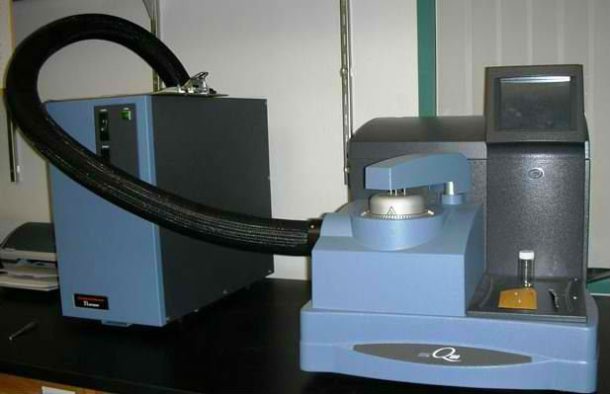Column Chromatography:
Column Chromatography is suitable for the physical separation (or) Purification of a sample (Herbal extract / Synthetic compound / physical mixture). In Column Chromatography solvents acts as mobile phase and solid surface acts as stationary phase (Adsorbent). The components present in the sample will adsorb on to the stationary phase depending upon the affinity. The mobile phase containing sample passes over the stationary phase, the components present in the sample are distributed between the solvent and adsorbent surface (Stationary).
The components having more affinity towards mobile phase will elute first from column and the components having less affinity towards mobile phase will elute later and lastly the components having more affinity towards stationary phase will elute last.
Stationary phase (Adsorbent):
The most common solid adsorbents are Alumina (Aluminium oxide) & Silica gel (Silicon dioxide). Silica gel is slightly acidic while alumina may be acidic, neutral or basic. For efficient separation the particles of solid adsorbent should be uniform size and large surface area. The quantity of adsorbent used is generally 20-50 times weight of sample, higher ratios can be used for more complex separations.
Adsorbent are polar in nature, hence polar components present in the sample have affinity towards stationary phase. Thus non-polar components are eluted first.
The order of components elution from a column usually follows the series.
Saturated hydrocarbons > Unsaturated hydrocarbons > ethers > esters > ketones > amines > alcohols > phenols > acids.
Polymeric compounds & salts will often not elute.
Activation of silica:
Activation of silica gel will be done at 130o C to 300o C for a 15-30 mins period for satisfactory separations of individual analytes.
Solvents:
The mobile phase (Solvent) will compete with the components of sample for adsorbent sites (Stationary phase). The selection of solvent is therefore an important consideration in column chromatographic separations.
- If the mobile phase (Solvent) is more polar than the components of the sample, then the solvent have more affinity towards stationary phase, hence mobile phase- stationary phase interaction. The component will remain in the mobile phase and separation will not occur.
- If the mobile phase (Solvent) is more Non-polar than the components of the sample, then the sample have more affinity towards stationary phase, hence sample-stationary phase interactions. The component will remain in the stationary phase and the mobile phase is unable to move the components form the adsorbent site, thus separation will not occur.
Selection of mobile phase should be done such that it should be capable of separating the components present in the sample. For most separations the mobile phase should be less polar than the components of the sample. The components of the sample must be soluble in the selected mobile phase so that they are not permanently adsorbed on to stationary phase.
The order of polarity (Elutropic series) for silica and alumina is as follows:
Hexane < Carbon tetrachloride < Toluene < Dichloromethane < Cholroform < Diehtyl ether < Ethyl acetate < Acetone < Propanol < Ethanol < Methanol < Acetic acid < Water
| Cyclohexanen-hexaneBenzeneTouleneDichloromethaneCholroform
t-butyl ether Diethyl ether Ethyl acetate Acetone 2-propanol Pyridine Ethanol Methanol Acetonitrile |
Non polarIncreasingPolarityPolar | Increasing eluting powerwith polar stationary phase |
Solvent Polarity chart
A single solvent may be sufficient for simple separations throughout the process, but for complex separations, a series of increasing polar solvents may be required.
A large increase in polarity might cause all the components of the sample to elute at once, as well as cause other problems with the column packing. Consequently, small polarity changes are accomplished by careful selection of mixed solvents as mobile phase for example: A pure hexane may be used as first mobile phase followed by a mixture of 90% Hexane + 10% Dichloro methane (DCM), Successive mixtures containing 20%, 50%, 80% & 100% Dichloro methane would complete the transition in polarity.
Column Chromatography carried at NISHKA Labs
Columns:
The columns available at NISHKA Labs, are simple glass tubes, varying in length & diameter. They usually have a stop cock attached to control the flow of elution. Some column may have a flask attached to the top of the column to acts as a solvent reservoir. Some columns may be graduated.
The variations in size allow one to select the best column for the separations. The resolution of the column depends both upon diameter and length of the adsorbent in the column. Resolution increases with increasing length and decreasing with increasing diameter. Thus, 25 grams of adsorbent will provide a better separation in a 1 cm diameter column than in a 2 cm diameter column.


